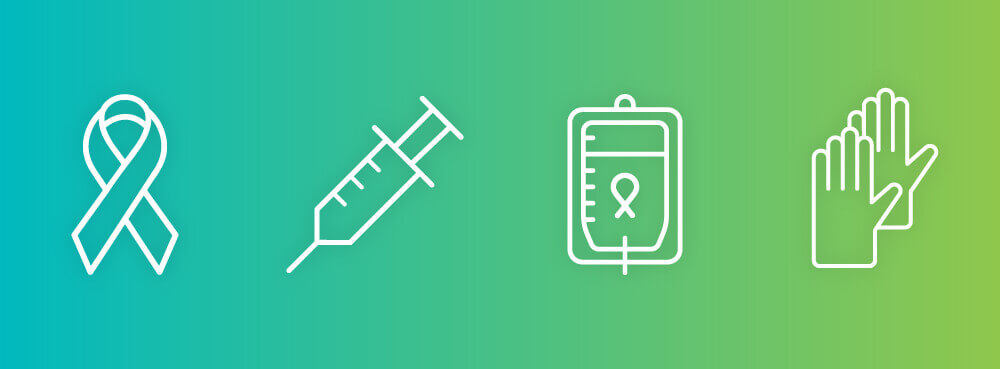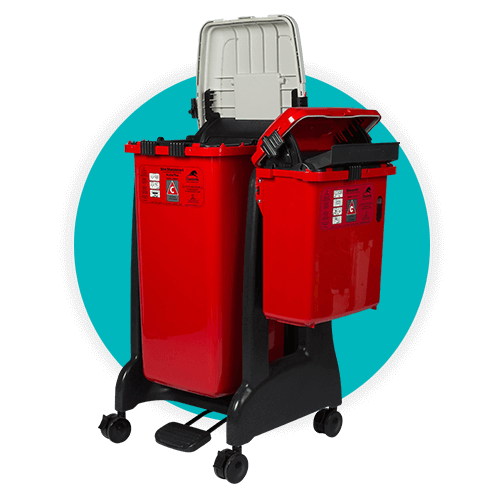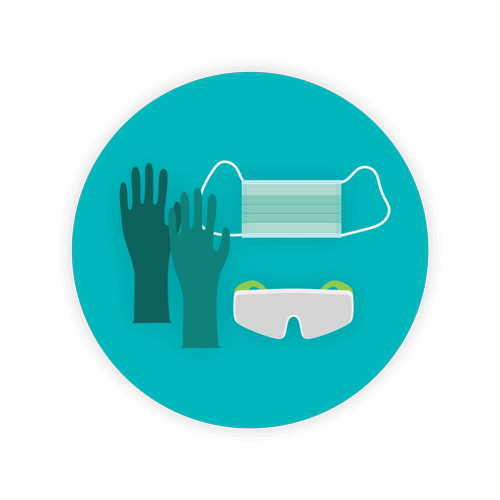Guide to Cytotoxic Waste Compliance

When you hear the words “cytotoxic waste” what is the first thing that comes into your mind? A leaking nuclear reactor? The sludgy stuff that might leak out of the industrial plant and into our waterways? Zombies?
Actually, if you don’t know the specific or at least general definition of cytotoxic waste, you’ve got some homework to do, especially if you are a medical waste generator of any size or type. In the United States, the most known type of cytotoxic waste is chemotherapy waste. Cytotoxic waste is defined as a drug that contains certain chemicals that are deadly or toxic to cellular structures – like drugs used in chemotherapy treatments.
Cytotoxic wastes, have the potential to severely endanger human health and wellness. It’s even more important to be aware that cytotoxic waste residues can contaminate number of items in and around healthcare or other workplace environments, specifically equipment and other materials.
Cytotoxic drugs, such as those used in chemotherapy, are also known as antineoplastic drugs, typically given to individuals diagnosed with potentially deadly diseases such as cancer, multiple sclerosis, and rheumatic and autoimmune disease processes.
Compliance supports safety
Proper education, knowledgeable waste segregation, and attention to detail when it comes to the storage, handling, and/or transportation of cytotoxic waste can reduce risk of inadvertent exposure. Healthcare workers, medical waste disposal company employees, and anyone else involved in any form with the manufacture, transportation, handling, or disposal of cytotoxic waste needs to be aware that exposure can come from numerous directions.
One of those directions is percutaneous such as a needlestick injury in the delivery of the chemotherapy treatment. It can be absorbed through the skin, inhaled, or even ingested. Careful handling and proper disposal into a compliant sharps container may help prevent inadvertent needle sticks.
Did you know that a patient undergoing cytotoxic drug treatment excretes bodily fluids that are potentially contaminated with cytotoxic waste? Are you aware that the risk of such exposure can exceed seven days following treatment? Protoect your employees and patients from exposure.
Daniels Health encourages processes that reduce risks
Daniels Health is well aware of the potential cytotoxic exposure to family members, other patients, hospital employees, and even medical waste removal companies. It gets even worse if it’s improperly disposed of.
Exposure can also occur through inadvertent touching of objects that have been contaminated with cytotoxic waste, such as:
- Personal protective equipment (PPE)
- Syringes
- Gloves
- Needles
For this very reason, waste segregation processes must be understood and followed by everyone in a medical care environment from housekeeping staff to janitors, to nurses, physicians, and ancillary staff. Is your facility up-to-date on regulations and guidelines for handling or exposure to cytotoxic waste?
Cytotoxic waste must be segregated and disposed of properly! Treat cytotoxic waste as a biohazard waste. Disposing of anything that may have been exposed to cytotoxic drugs with other types of waste renders all that waste hazardous.
Cytotoxic waste is typically disposed of through a process of incineration. Before it gets to the incinerator, knowing waste stream management and proper waste segregation methods must be followed.
Know your province’s guidelines in regard to healthcare waste management and cytotoxic waste, clinical waste, and microbiological waste – state rules are often more stringent than those of the federal government.
Brief overview of disposal guidelines for chemotherapy waste – a type of cytotoxic waste
Province guidelines for proper disposal of antineoplastic or chemotherapy waste are found can be found online.
Treatment of potentially dangerous infectious waste on-site through incineration is recommended whenever possible, not only to reduce the amount of times it’s handled before it reaches its final disposal, but because it also reduces risk to medical waste disposal companies and the general public. Be aware the transportation of any potentially infectious waste, or biohazard waste disposal must also adhere to the guidelines of the federal government, the Department of Transportation, and other agencies.
Stay compliant – know the rules
For more detailed information and definitions, read here for a list of hazardous wastes. Take the time to read through the sections and the regulations. Information is detailed and specific:
- Section 261.30 General.
- Section 261.31 Hazardous wastes from nonspecific sources.
- Section 261.32 Hazardous wastes from specific sources.
- Section 261.33 Discarded commercial chemical products, off-specification species, container residues, and spill residues thereof.
- Section 261.35 Deletion of certain hazardous waste codes following equipment cleaning and replacement.
Every medical waste generator, hospital, cancer treatment centre, outpatient clinic, and so forth must be aware of proper disposal methods of antineoplastic wastes.
Daniels Health is dedicated to protecting human health and the environment when it comes to healthcare waste management. We also stress the importance of taking a cradle-to-grave approach to any type of biomedical waste. That means taking responsibility of your medical waste generation from the point of origin to final disposal, and yes that means even after your medical waste has been picked up by a biomedical waste disposal company.
Such an approach is not only ethical, but it’s the law. For more information on how Daniels Health can help you set up compliant and safe waste stream and waste segregation processes and develop long-term, sustainable, and effective solutions in dealing with cytotoxic waste to maintain compliance, give Daniels Health a call today.
Let's Talk!
Your time is valuable, and we don’t want to play hard to get. You can either phone us directly on the details listed on our contact page, or feel free to fill out this short form and one of our team members will get back to you as quickly as possible.
